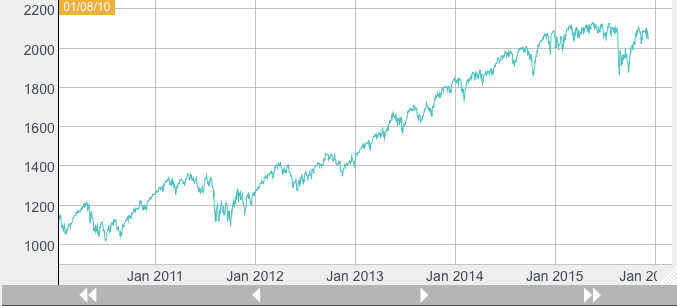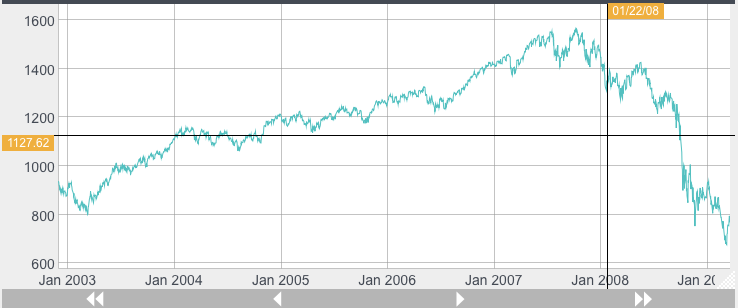Exploring the Tasty Trade SPX Credit Spread Trading System: Unveiling the Details
Intrigued by Claims of Success, an option trader approached us to conduct a rigorous backtest of a credit-spread system touted by Tasty Trade. According to their assertions, this trading system surpassed the performance of the best mutual fund from mid-2010 to mid-2015 by over 100%. Tom Sosnoff, in his presentation, boldly dismisses mutual funds as “garbage.”
Now, let’s delve into the specifics of the SPX Weekly bull-put credit spread trading-system rules:
- SPX is the underlying.
- Sell 1 PUT and buy 1 PUT 100 points farther OTM to create an 84% POP.
- $10,000 invested into each trade (Deep pocket investment method).
- No additional risk management is used on any trade.
- Trade begins 7 DTE and expires one week later.
Tastytrade compared this trading method to investing into the top mutual fund for the same time period.
Original video:
Best Mutual Fund Performance 2010 – 2015
Tasty Trade states the best fund profited 145% over the nearly 5-year span.
Apples to Apples?
They claim they are comparing apples to apples in this study. However, if you invested $10,000 into a mutual fund, it’s a $10,000 fixed risk and investment. If you deposit $10,000 for each trade in the Tasty Trade system, you are theoretically risking up to $600,000 over the 5 year span. There is nearly unlimited risk exposure with this trading system, similar to selling naked puts, since you’ll need to deposit more money into the account each time it drops below $10,000.
For this reason, the study is not comparing apples to apples.
Our Back Test of the SPX Weekly Credit Spread Trading System
We conducted a back test aiming to replicate their results as accurately as possible.
However, we do not guarantee in any way that our test is exactly the same as theirs, nor can we guarantee it’s 100% accurate since we are using historical data, which cannot be validated.
In our back test, we found that there was not a 100 point spread available at the delta they were selling each week. This means the test could not be performed 13% of the time according to our test.
For the 5-year period from 2010 to 2015, there should be about 260 total 7-day credit spreads to back test. Our query found only 226 matches, which means about 34 back tests were skipped entirely.
Here are the number of trades back-tested for each year of our back test:
- 2010: 13
- 2011: 36
- 2012: 39
- 2013: 41
- 2014: 42
- 2015: 55
Our back test produced lower returns than theirs.
We found a profit of $19,941 and 86% winners.
Although the back-test results were very optimistic, the test is incomplete.
Results are Skewed – the time period tested was bullish.
This 5-year stretch of SPX was very bullish during this back-test. See the price chart below.
Common Drawdowns
Below are some of the weekly-drawdowns we saw in our back test.
2010: -17%
2011: -32%
2012: -10%
2013: -12%
2014: -46%
2015: -89%
2008 Back Test Produces Yearly Yield of -810%
In 2008 we did not have Weeklies, but if we did, the yearly yield rate was about -810%.
AVG WINNER: 5.6%
AVG LOSER: -38%
Bearish market back-test reveals risk-exposer of this trade.
2008 followed a 6-year bullish market – very similar to where we are at the beginning of 2016.
Tasty Trade Credit Spread vs. Mutual Fund Over 2008
According to one source, kiplinger.com, we found that one mutual fund lost 5.1% during 2008 vs. the 810% estimated loss of the Tasty Trade credit spread system.
Apples to Apples 2008 to 2015 Back-test
We performed an “apples to apples” comparison from 2008 to 2015. A fair comparison would be to use $10,000 one-time for both the mutual fund and the weekly credit spread.
In our test, we found that only 15% of the capital could be used in the credit spread system, or it lost money. Using 15%, the system profited 9% over the 8 year span. However, this system would have lost money if 2008 offered weekly cycles.
The best mutual funds average about 35% per year. Since the best fund lost 5% in 2008, then the total profit investing the $10,000 into the best mutual fund was about 240% over the 8-year span.
Conclusion
The Tastytrade weekly credit spread system, at best, appears to be a break-even strategy long-term. While it may generate profits during bullish years, it incurs significant losses during bearish years. Comparing a $10,000 investment in weeklies to a mutual fund necessitates a one-time investment to be truly “apples to apples.” When including bearish markets in the comparison, the best mutual fund significantly outperforms the weekly trade, gaining 240% or more than the touted weekly system over the 8-year span.



